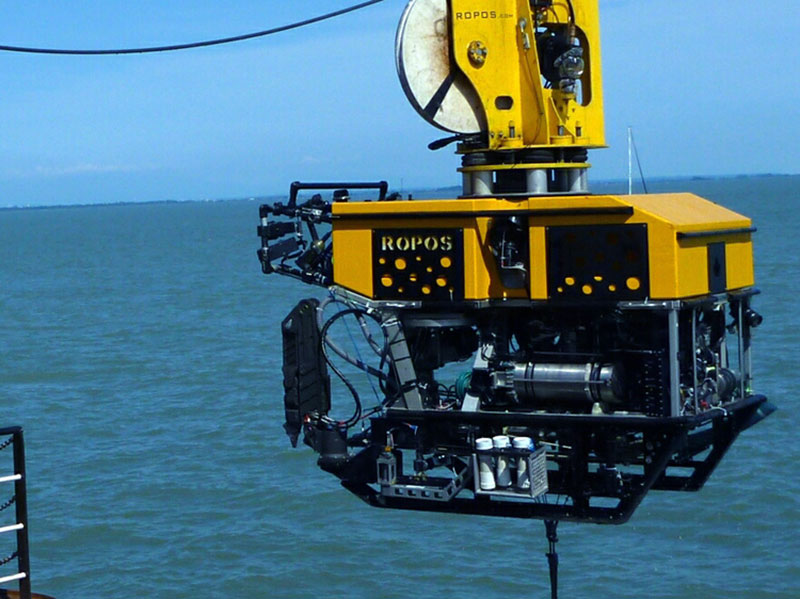
by Dr. Martha Nizinski, Zoologist, NOAA Office of Science and Technology, National Systematics Laboratory
Dr. Anna Metaxas, Professor, Dalhousie University
June 8-22, 2017

NOAA Ship Henry Bigelow at sea. Image courtesy of the Northeast Fisheries Science Center. Download larger version (jpg, 94 KB).
The health of the ocean and fisheries depends on sound science and management on an international scale. Scientists from the United States and Canada share many deep-sea coral research interests, thus plans for transboundary collaborations have been in development since 2011. Under the goals of NOAA and the Department of Fisheries and Oceans Canada for a healthy ocean, information collected on this mission would contribute specifically to an improved understanding of ecosystems to inform resource management decisions and healthy habitats that sustain resilient and thriving marine resources and communities.

This map displays the operating area of the Northern Neighbors: Transboundary Exploration of Deepwater Communities expedition. Image courtesy of Northern Neighbors: Transboundary Exploration of Deepwater Communities expedition. Download larger version (jpg, 6.7 MB).
Beginning on June 8, 2017, a team of scientists aboard NOAA Ship Henry Bigelow will spend 15 days at sea exploring canyon and slope habitats off the coast of the Northeast U.S. and Atlantic Canada, as well as study sites in the Gulf of Maine with the Canadian remotely operated vehicle (ROV) Remotely Operated Platform for Ocean Science (ROPOS). Specifically, the team will target minor canyons between Nygren and Heezen canyons (U.S.); Georges and Corsair canyons; and sites on the continental slope off Browns Bank (Canada). They will also explore a number of locations in the northern Gulf of Maine (U.S.).

Remotely Operated Platform for Ocean Science (ROPOS) is a remotely operated vehicle designed to carry out a wide range of scientific explorations at depths down to 5,000 meters. Image courtesy of NOAA Office of Ocean Exploration and Research.. Download larger version (jpg, 282 KB).
With the overall goal of surveying predicted deep-sea coral communities associated with these habitats, the team will conduct a science mission with the following objectives:
Using the ROV ROPOS as the primary sampling gear, the team will spend approximately two days in each canyon, with the remaining time split between four locations in the northern Gulf of Maine. During each 12-hour deployment, ROPOS will take high-definition video and still images of the seafloor and collect coral samples, other invertebrates, and sediment cores.
When ROPOS is on board the ship to download data and recharge batteries, the team will conduct a variety of other ship-based operations to study these habitats in more detail. First, the ship’s multibeam system will map the seafloor in regions where data are missing or incomplete. By filling in these “holes,” the team aims to complete a high-quality image of the seafloor topography. These maps will be important for mission planning, not only for this cruise, but also for future missions in the region.
Additionally, a CTD will be deployed to aid in the characterization of the water column. This apparatus records the depth, salinity, and temperature profile of the water column.